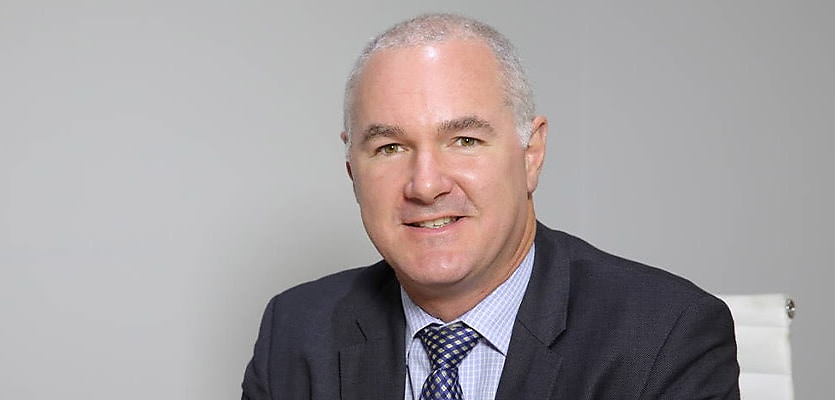As the federal election nears, data showed that the least affordable electorate would require saving for 21.9 years to afford a housing deposit, with Sydneysiders experiencing the worst affordability across the nation.
CoreLogic’s latest Property Pulse report revealed that housing affordability indicators across Australia remained at or reached new record highs in unaffordability at the end of 2024.
Research director at CoreLogic Australia, Tim Lawless, said that median household income would need to spend at minimum six times their annual gross income to purchase a median priced dwelling.
Data showed that the ratio of dwelling values to households income has consistently been above 6 since 2003, but spiked to a record high of 8 in 2022, and most recently during December of 2024.
“A ratio of 8 means a household on the median income would be spending eight times their annual gross income to purchase the median value dwelling,” Lawless explained.
The report also showed that a median income household that had purchased a median value dwelling with a 20 per cent deposit would have to use just over half their gross annual income for mortgage repayments.
Lawless said that aspiring home owners are taking longer than ever to get onto the property ladder, with a household requiring 10.6 years to save for a standard 20 per cent deposit, assuming they can save 15 per cent of their annual income.
Despite widespread housing affordability issues across the nation, CoreLogic revealed that levels of unaffordability were most severe in Sydney, home to four of the top five and 12 of the top 20 least affordable electorates.
According to data, the electorate of Bradfield – which includes the North Sydney and Hornsby regions – emerged as the least affordable in the nation, with the median household needing 21.9 years to save for a 20 per cent housing deposit on a property in Bradfield.
While the Bradfield electorate recorded a dwelling value to income ratio of 16.5, Lawless said that the location has consistently ranked among the top electorates for unaffordability over the past decade.
“Bradfield has recorded the highest dwelling value to income ratio of any electorate consistently since the final quarter of 2018, and prior to that was ranked either number one or two nationally since 2013,” he said.
Despite being the 12th least affordable electorate and home to high-end suburbs like Bellevue Hill and Vaucluse, the Wentworth electorate has a slightly lower median income than the Bradfield electorate, while having a higher housing density.
“In the Wentworth electorate, 69 per cent of dwellings are classified as units, compared with just 40 per cent of housing in Bradfield. It’s a timely reminder about the affordability benefits that a diverse range of housing stock can provide,” Lawless said.
Outside the Sydney area, the report showed that regional NSW accounted for three of the top 20 least affordable electorates.
The area of Richmond recorded a dwelling value to income ratio of 12.4, which was the highest of any regional market across the nation.
Before the pandemic, Lawless said that Richmond’s electorate ranked 21st for unaffordability nationwide, noting that the property growth during the pandemic significantly contributed to diminishing the area’s affordability.
“Significant value growth through the pandemic saw affordability metrics across most lifestyle markets worsen substantially, with Richmond now ranked the fifth most unaffordable electorate nationally to purchase a home,” he said.
On the other side of the spectrum, the report’s findings showed that among the capitals, Melbourne was the most affordable place for the electorate to buy a house, with a dwelling value to income ratio of 4.7 per cent – the lowest across the Australian capitals.
Lawless stated that the Melbourne electorate has the highest proportion of units nationwide, comprising nearly 80 per cent of all dwellings.
While Lawless noted that the Melbourne electorate’s affordability has been maintained by dwelling values remaining 7.5 per cent below their record highs from 2022, he emphasised that it is still challenging to enter the area’s property market.
“Mortgage serviceability on a new loan comes in under 30 per cent at 29.7 per cent and it would take a prospective household ‘just’ 6.3 years to save for a 20 per cent deposit,” Lawless said.
Outside of the inner-city area, Lawless said that the 12th and 13th most affordable electorates of Lalor and Hawke in Melbourne’s outer West were “good examples” of how greenfield supply additions can help to preserve housing affordability.
“The density of housing stock in these electorates is very low, with units comprising just 8.3 per cent and 7.5 per cent of housing stock, respectively,” he said.
Lawless said that the imbalance between supply and demand has been a key driver of affordability issues in the Australian housing market.
Ahead of the upcoming 2025 federal election on 5 May, Lawless said that industry reactions to the major parties’ housing policy pledges have largely shown concern that the underlying issues behind the housing affordability crisis are not being addressed.
“Most economists agree that policies announced in the lead-up to the election are more focused on applying a Band Aid to the symptoms of housing affordability rather than addressing the underlying issues that have created such an unaffordable housing sector,” Lawless concluded.







You are not authorised to post comments.
Comments will undergo moderation before they get published.